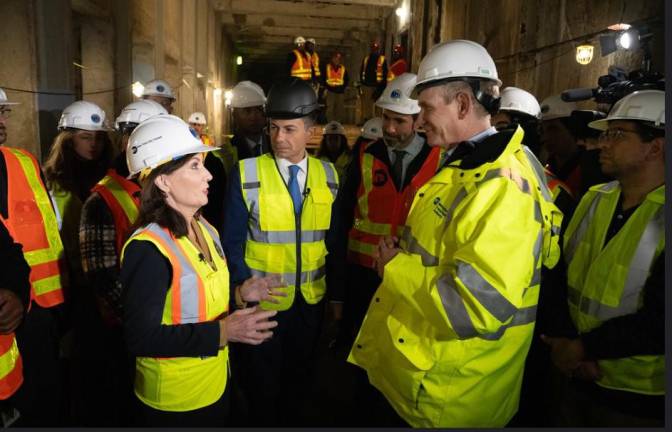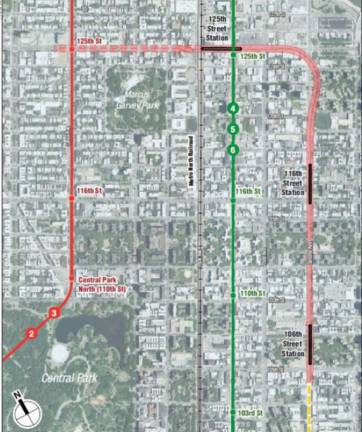$3.4B in Fed Funds Jump Starts 2nd Ave Subway Extension
The Biden Administration has unleased $3.4 billion under a core capacity grant program to fund the Second Ave subway extension that is projected to cost $7.4 billion. The project will extend the Q line from 96th St to 125th St. and Lexington Ave. and add three new stops.


The federal government is going to jump start the long delayed Second Avenue subway extension with $3.4 billion in funding that the Biden Administration okayed for the overall project that has a $7.4 billion price tag.
But even though some of the tunnels from the 1970s are already built, it is going to take nearly ten more years to complete the extension which is scheduled for 2032.
Three new stops are going to be added which will stretch the current Q line that now ends at 96th St. and Second Ave. north with stops at 106th and 116th St. and then east to 125th Street and Lexington Ave. where it will link to the 4, 5, and 6 lines and a Metro North Railroad stop.
The original plan for the Second Avenue subway was drawn up eighty years ago when Fiorello LaGuardia was mayor. It was later refined into an elaborate four-and six- track line intended to connect downtown with the Bronx and Queens.
“Transit is like air and water; we need it to survive,” said MTA Chairman and Chief Executive Officer Janno Lieber at a press conference announcing the extension on Nov. 4.
The neighborhood of East Harlem is one that is very dependent on mass transit. Statistically, 71 percent of current residents live in public housing, only one of four in this area own a motor vehicle. Demand for adequate transit is enormous, with the only the 4/5/6 subway lines currently available; those trains are among the busiest of the Transit Authority subway lines, with riders often having to wait for several trains before they can actually board.
“When transit grows, New York grows,” said Senator Chuck Schumer who said that there are 300,000 people residing in the northern Manhattan area that the new subway extension will serve. He pointed out that this is a greater population than many entire cities across the country. “This is a great day for the community!” he said. He said that that the new subway link will carry more riders daily than the Philadelphia and San Francisco subway systems combined.
Governor Kathy Hochul, who noted that the day of reckoning had come, with time to right the past wrongs of transportation and racial inequality, observing that East Harlem Second Avenue Subway construction had been stalled since the Depression, with a couple of exceptions in the 1970s. “Next stop, 125th St.,” she said.
Former Congressman Charles Rangel who had long pushed for the subway to reach East Harlem also addressed the assembled guests..
US Secretary of Transportation Pete Buttigieg stated “The hands that lay the cornerstone are not the same hands that lay the keystone,” alluding to the long time line of the project coming to fruition. He finished delivering part of his speech in flawless Spanish for the benefit of Spanish speaking community members attending.
There was some early 1970s construction on this line but that was halted in 1975 during the city’s fiscal crisis. There were two tunnel segments completed at that time in East Harlem: an 1800 foot link from 99th to 105th Streets, and a second 2,500 foot piece from 110th to 120th Streets under Second Avenue. During that time, a separate tunnel was also built in Chinatown as well.
Of the $7.4 Billion cost, the additional $4 Billion is coming from MTA Capital Program funds.
When it is finally completed in about ten years, the new extension is projecting 100,000 extra subway riders each day.